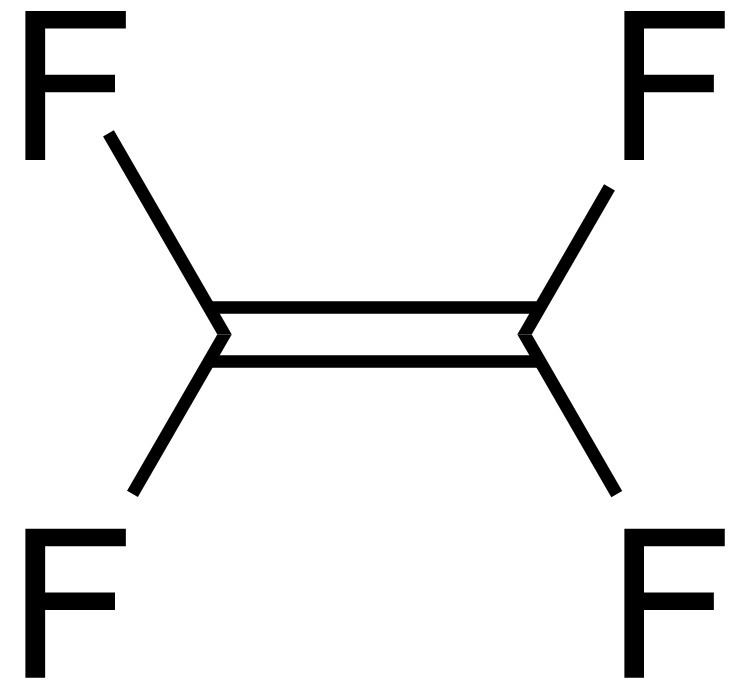Formula C2F4 Density 1.52 g/cm³ | Molar mass 100.02 g/mol Appearance Colorless gas | |
 | ||
Tetrafluoroethylene chemistry
Tetrafluoroethylene (TFE) is a chemical compound with the formula C2F4. It belongs to the family of fluorocarbons and is the simplest perfluorinated alkene. This gaseous species is used primarily in the industrial preparation of polymers.
Contents

Properties

Tetrafluoroethylene is a colorless, odorless gas. Like all unsaturated fluorocarbons it is susceptible to nucleophilic attack. It is unstable towards decomposition to C and CF
4 and prone to form explosive peroxides in contact with air.
Industrial use

Polymerization of tetrafluoroethylene produces polytetrafluoroethylene (PTFE) polymers such as Teflon and Fluon. PTFE is one of the two fluorocarbon resins composed wholly of fluorine and carbon. The other resin composed purely of carbon and fluorine is the copolymer of TFE with typically 6–9% hexafluoropropene (HFP), which is known as FEP (fluorinated ethylene propylene copolymer). TFE is also used in the preparation of numerous copolymers that also include hydrogen and/or oxygen, including both fluoroplastics and fluoroelastomers. Typical TFE-based fluoroplastics include ETFE, the alternating 1:1 copolymer with ethylene, and PFA, which is a random copolymer similar to FEP but with a minor amount of a perfluoroalkyl vinyl ether (PAVE) rather than HFP. DuPont uses primarily perfluoro(methylvinylether), whereas Daikin uses primarily perfluoro(propylvinylether) in manufacturing PFA. There are numerous other fluoropolymers that contain tetrafluoroethylene, but usually not at greater than 50% by weight.
Manufacture

TFE is manufactured from chloroform. Chloroform is fluorinated by reaction with hydrogen fluoride to produce chlorodifluoromethane (R-22). Pyrolysis of chlorodifluoromethane (at 550-750 °C) yields TFE, with difluorocarbene as an intermediate.
CHCl3 + 2 HF → CHClF2 + 2 HCl2 CHClF2 → C2F4 + 2 HClThe reverse polymerization reaction – vacuum pyrolysis of PTFE at 650–700 °C (1,200–1,290 °F) in a quartz vessel – is a convenient laboratory synthesis of TFE. The PTFE polymer cracks, and at a pressure below 5 Torr (670 Pa) exclusively C2F4 is obtained. At higher pressures the product mixture contains hexafluoropropylene and octafluorocyclobutane.
Safety
TFE is an alkylating agent, albeit a weak one, and as such is expected to be carcinogenic. LD50(rat, inhalation) = 40000 ppm. The compound is best handled diluted with an inert gas, as localized heating can provoke explosive decomposition to C and CF4. When working with TFE, oxygen must be carefully excluded, as it catalyzes autopolymerization, which can take place with great force.
There is also a danger of explosion when working with TFE, from adiabatic compression. If pressurized TFE is allowed into a vessel/pipework at a lower pressure the heat generated from compression may be sufficient to trigger the TFE explosive decomposition.
In industry, pipework is flushed with pressurized nitrogen, before the introduction of TFE, both to exclude oxygen and to avoid adiabatic compression .
